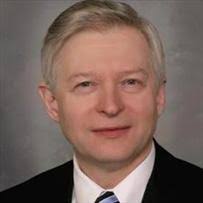By SCNU
hits
Title:Insights into unconsciousness: anesthetic-induced disintegration of neuronal network activity
Speaker:Anthony G. Hudetz, D.B.M. Professor (University of Michigan Medical)
Time:Thursday, 25th October, 2018
Address:Rm. 201, School of Psychology
Personal profile:

Education
09/1971-06/ 1974 MS, Physics, Eotvos Lorand University, Budapest, Hungary
09/1975-06/1979 D.B.M.(Doctor Biologiae Medicinalis), Physiology, Semmelweis University of Medicine,Budapest, Hungary
09/1980-06/1985 Ph.D. (Medical Science),Semmelweis University of Medicine, Hungarian Academy of Sciences, Budapest, Hungary
Abstract:
The unity of subjective experience intuitively suggests that some form of integrative brain process underlies normal human consciousness. Integration can be understood in the neurophysiological context as multisensory, sensory-motor, and higher cognitive integration or in the theoretical context as information integration. It occurs in both spatial and temporal dimensions and at various organizational scales of the brain. The brain's capacity for integrating information can be measured via constructs from Information Theory. It has been suggested that consciousness fades when information integration in the brain fails (disintegration). Dreamless sleep, anesthesia, vegetative state, and coma are states in which this hypothesis can be tested. At what level or organization is disintegration causally important for loss of consciousness? We start at the level of neurons and examine the change of their interaction patterns at various levels of sedation. Empirical evidence suggests that in reduced states of consciousness, functional interaction among individual neurons is disrupted. The strength of monosynaptic neuronal interactions is decreased and the continuity of ongoing neuronal activity becomes fragmented. Moreover, the amount of information associated with cortical neuronal interactions is sharply reduced at a critical anesthetic dose. This suggests a rapid onset of disintegration in both spatial and temporal domains. Selective changes in layer-specific information exchange among hierarchical sensory cortical regions are also observed. Together, these findings illuminate the role of neuronal functional disintegration as a mechanism of anesthetic-induced unconsciousness and may reveal some of the critical neuronal functions underlying the conscious state.
